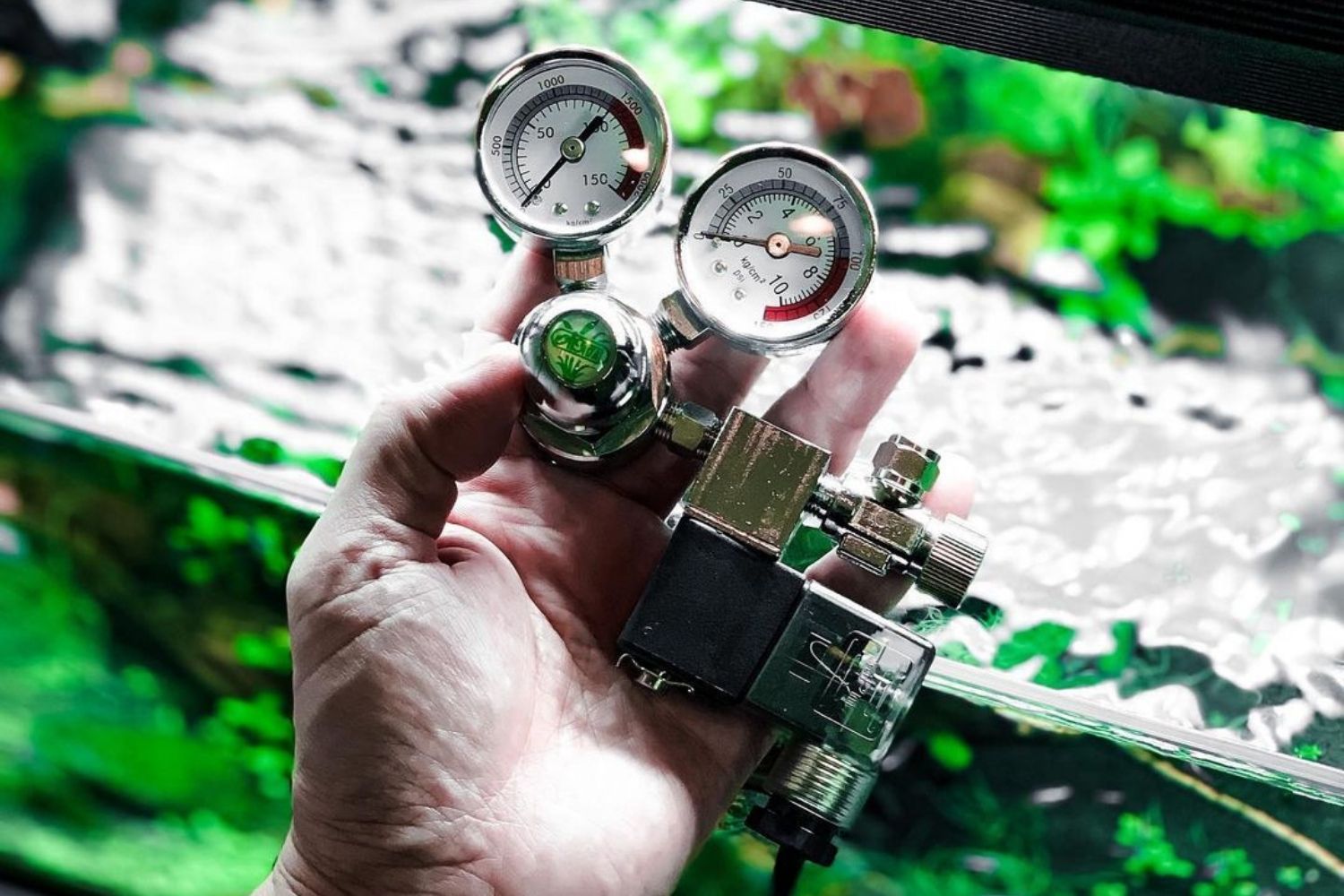If you want your planted tank to thrive, you need to ensure it’s getting the right amount of CO2. If there isn’t enough, your plants will die, and if you use too much, you risk harming your fish and encouraging the growth of algae.
That’s why investing in the best CO2 regulator is one of the greatest methods to ensure you’re getting the right amount of CO2 without putting your aquarium at risk. Regulators play a critical role in your CO2 system and not all are created equal. There are many regulators out there, some cheaper than others.
However, it’s crucial to trust such a careful process to a good manufacturer that you’re sure will deliver a quality product. Luckily, our team has reviewed the best regulators and came up with the ultimate list of the best CO2 regulators, and examined them by keeping in mind all they need to have to uphold the industry standard.
- Best Overall: SR Aquaristik Dual Stage CO2 Regulator Kit
- Best Budget: AQUATEK CO2 Regulator
- Most Accurate: Titan Controls CO2 Regulator
- Easiest to Read and Operate: FZONE Aquarium CO2 Regulator Dual Gauge
- Best Dual: FZONE Pro Series Aquarium Dual Stage CO2 Regulator
- Best Mini: FZONE Aquarium CO2 Regulator Mini Series
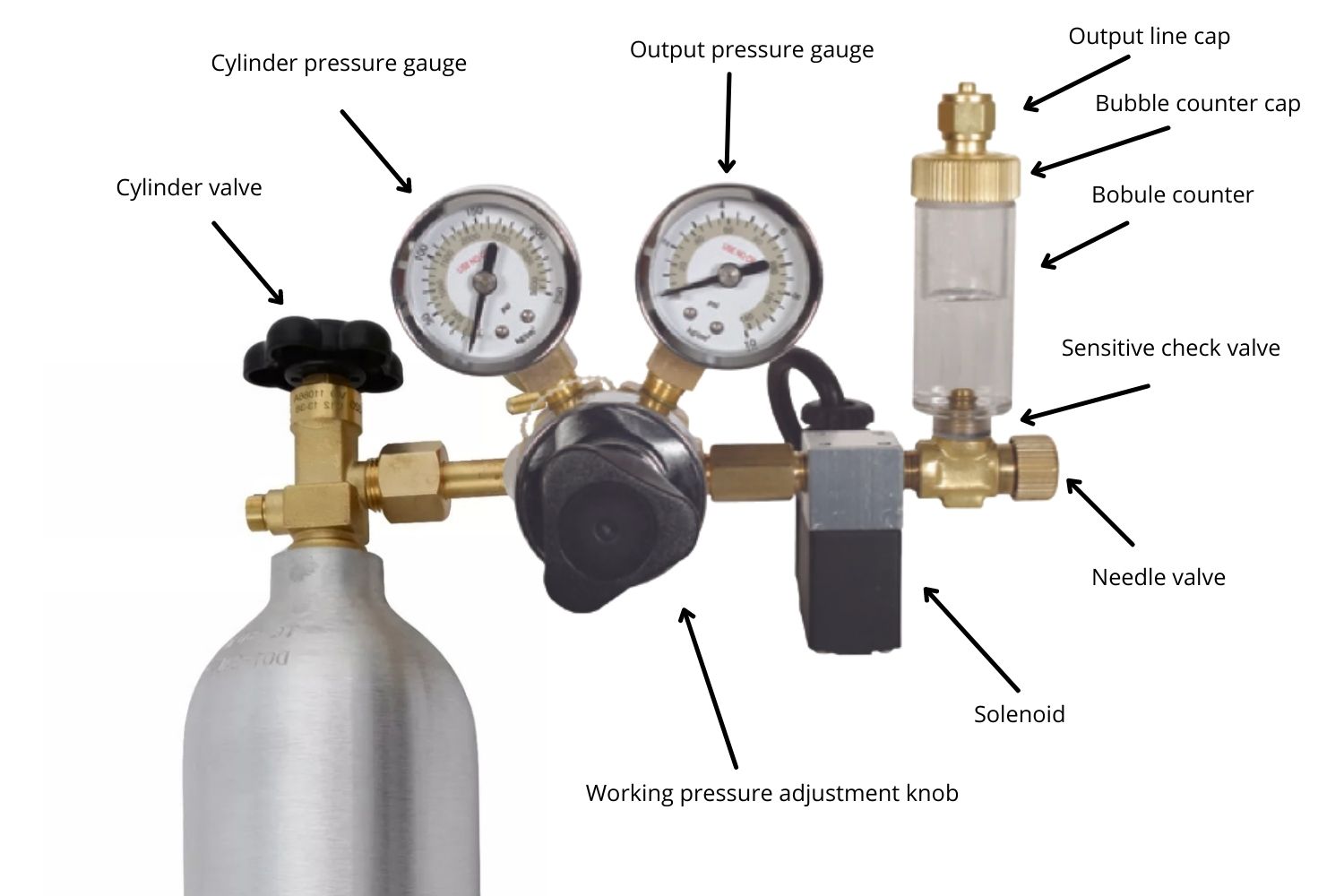
Best CO2 Regulators Reviewed
We considered factors such as readability, decompression stages, material, functionality, and more to determine the best CO2 regulators for planted tank. We also thoroughly researched each product and bought and tested all of them onsite to ensure a trustworthy review.

This might be the one for you if you’re looking for a low-cost dual-stage regulator. The gauges are easy to see and understand. You receive a more dependable and constant CO2 production because it’s dual-stage rather than single-stage like the others. The needle valve is highly dependable and not overly sensitive, making it more straightforward to achieve an accurate bubble count and flow rate.
The solenoid is excellent, and it comes with a bright LED light that lets you know when your CO2 system is turned on and off. The CO2 regulator also has a comprehensive control output knob that significantly decreases the risk of altering output volume by accident. The best of the bunch, this one assures you that you won’t need to worry at all about any problems that might arise.
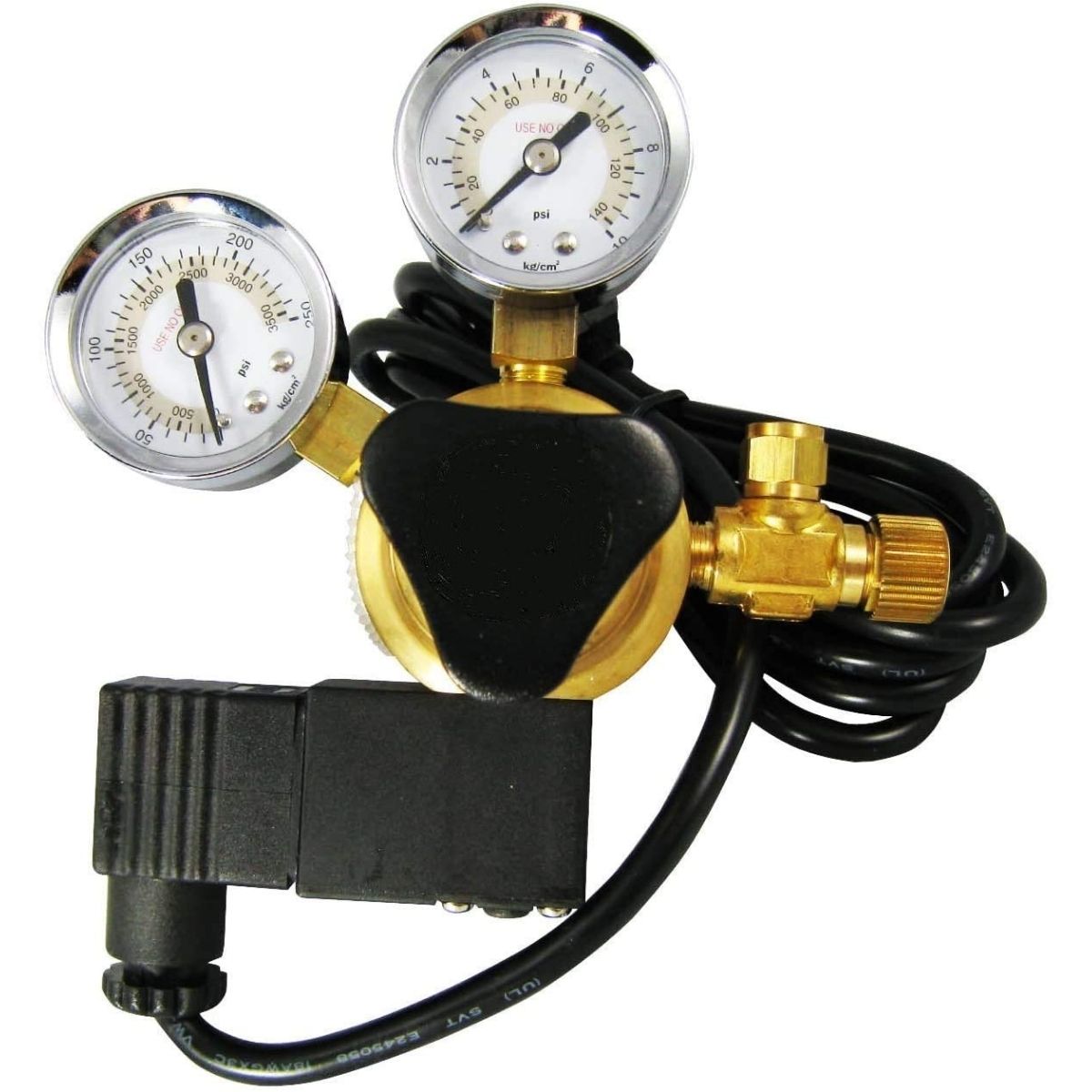
The brass design of this Aquatek aquarium CO2 regulator ensures long-term durability and dependability. It will undoubtedly last a long time in your tank. The solenoid valve is intended to be cold to the touch, which means it will not overheat and create problems like some other valves in the market.
The precise needle valve regulates the amount of carbon dioxide released into your tank. A maximum outflow pressure of 140 PSI may be achieved using the precision output working pressure adjustment knob. It comes with a built-in bubble counter and to prevent water backflow into the system, a check valve that’s integrated.
This product also works with the majority of high-density tubing, CO2 atomizers, and CO2 diffusers. It comes in both premium and basic models, and both versions work best on large tanks that require more CO2.
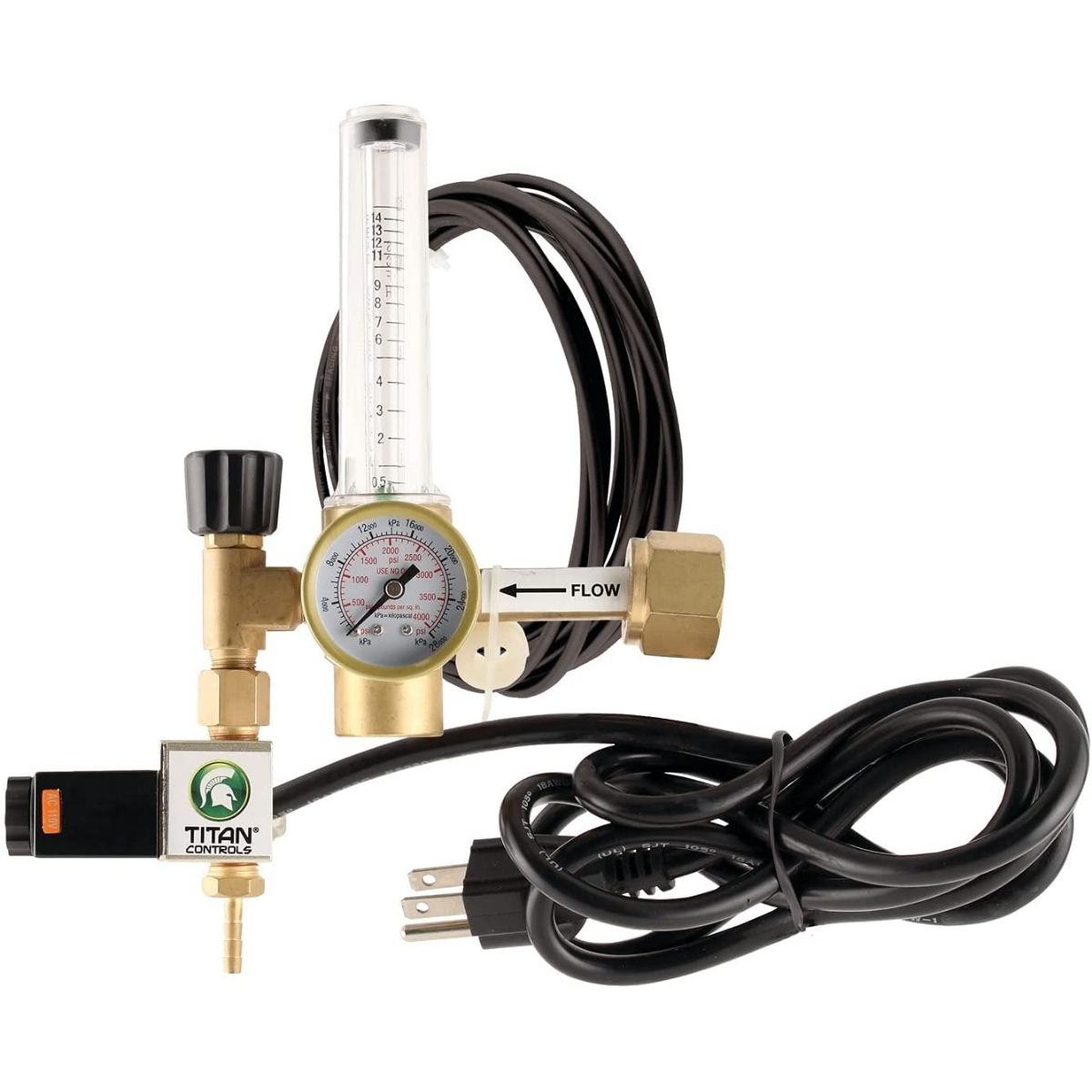
Titan Controls’ aquarium CO2 regulator is strong and built to last, with a brass construction for long-term reliability and durability. The pressure from the tank and outflow may be read quickly and accurately using a high-quality no-oil pressure gauge.
This kit comes with two plastic tank washers and ensures that you can reach your aquarium with 12 feet of dispensing line. It comes with a heavy-duty solenoid valve and is compatible with other Titan Controls CO2 Controllers as well as other 120 volt controllers and timers.
It features a precision flow meter that monitors CO2 flow rates from 0.5 to 15 SCF/hour with pinpoint accuracy. With this accuracy, we award it as the most accurate of the bunch.

All this technical talk might get tiring and confusing. For beginners or a younger audience, all this might sound like some tough technical thing. However, there’s a product that you won’t have to do much to get to work. Our choice for the most accessible CO2 regulator to deal with is the FZONE Aquarium CO2 Regulator.
There are two gauges on this model. The inner tank pressure can be read with one, while the exiting pressure may be measured with the other. The upgraded solenoid operates on direct current, which reduces noise and prevents overheating. CO2 management is exact, thanks to the precision control system.
It comes with the check valve and all of the essential equipment for a quick and painless installation. Plus the absolute delight this one was to deal with, made us award it as the easiest to operate. You might not even have to read the instructions for this one, and we can’t recommend this enough for beginners.

First of many CO2 regulators from Fzone, comes the Fzone Pro Series Dual Stage Aquarium CO2 Regulator. The manufacturers are well-known for producing high-quality, long-lasting goods by also keeping the pricing reasonable. This product especially is the best dual CO2 regulator we’ve seen.
You’ll have complete control over the time and amount of carbon dioxide pumped into your aquarium with a solenoid valve, a bubble counter, and a needle valve. The latter allows you to fine-tune and accurately control the CO2 output, allowing you to create the ideal atmosphere. This two-stage regulator regulates pressure and ensures a consistent CO2 output by preventing the end-of-tank-dump catastrophe, which occurs when the pressure drops towards the end of a CO2 tank and causes a CO2 dump.
It has a one-of-a-kind modular manifold block design where each of the two manifold blocks comes with a high-precision needle valve and a bubble counter. They are self-contained and may be used in numerous tanks, which is quite convenient.
The small dual display makes it simple to see the PSI and CO2 settings, ensuring they are constantly at the desired levels. The necessary installation tools are supplied, making the process as straightforward as possible. You won’t have a problem with it, from setting it up to using it afterward.
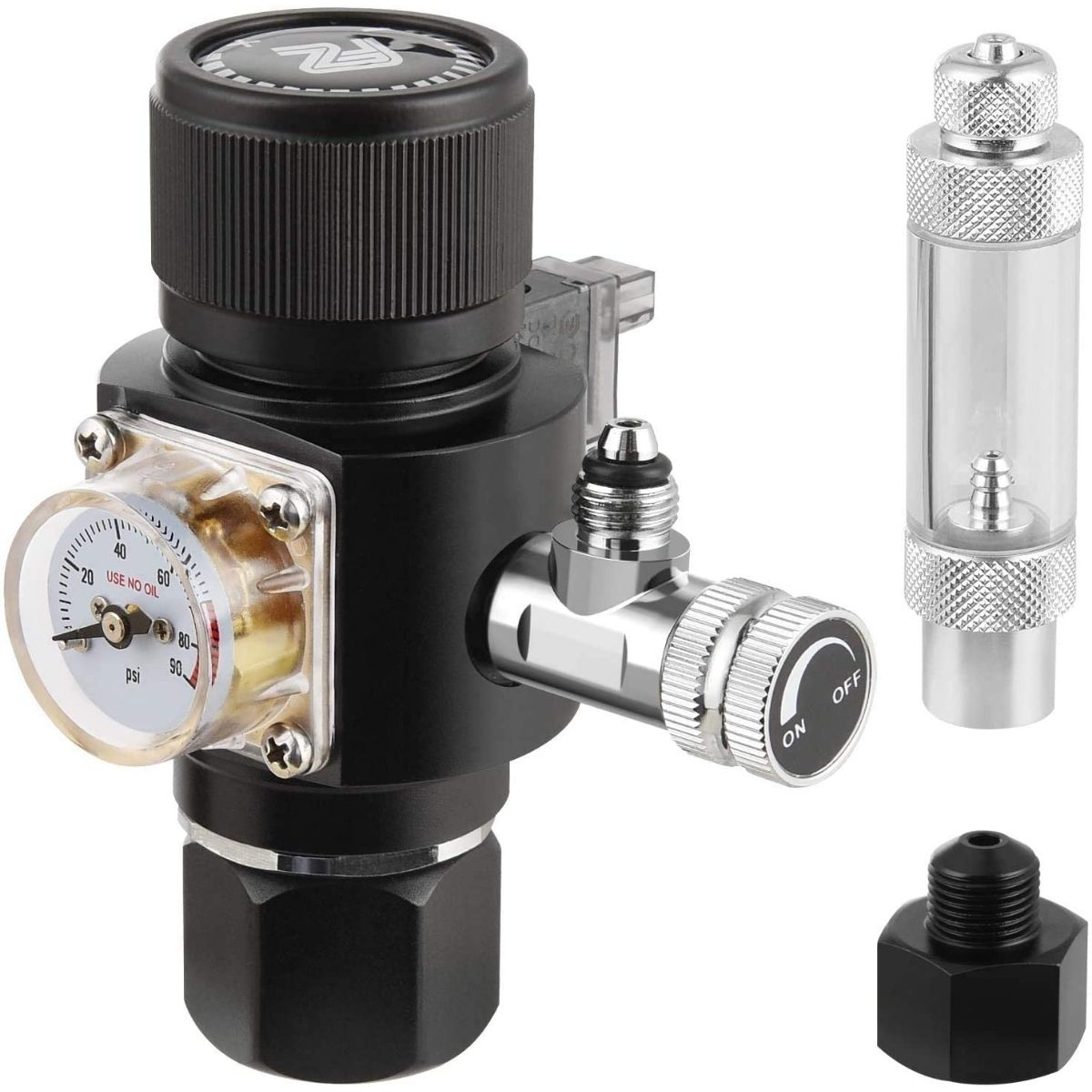
The FZONE Mini-Series V3.0 Regulator is a fantastic and adaptable dual-stage control (output pressure and needle valve). The multi-stage design is intended to maintain the pressure constant and avoid a tank dump at the conclusion (EoTD).
It has an outflow pressure monitor, a pressure adjustment knob, an OTS small 12v DC solenoid valve, a rotatable needle valve, and a bubble counter with a check valve to prevent water backflow into the CO2 canister while it’s not pumping CO2.
This regulator includes three distinct fitting adapters: a 5/8′′ UNF thread for disposable CO2 cartridges, a CGA320 thread for steel CO2 tanks, and a paintball CO2 canister thread adaptor. The needle valve on the rotatable regulator may be swiveled 360 degrees to be horizontal or vertical, allowing it to fit on any type of CO2 tank.
This copper needle valve may be adjusted to a flow rate as low as 0.3 bubbles per second. All these features packed up inside a really small regulator means that not only will you save yourself a ton of work, but you’ll also save your wallet. At an extremely fair price point and great versatility, even in the smallest package possible, you get one of the best products in the market right at your fingertips.
Why Should You Use Aquarium CO2 Regulators?
In a planted aquarium, the second thing you will going to need besides the plants is CO2. Carbon dioxide (O=C=O) is a chemical molecule of two oxygen atoms linked to one carbon atom. Terrestrial and aquatic plants use carbon dioxide and water that has been taken from the atmosphere and mixed with light energy to generate oxygen and carbohydrates during photosynthesis.
These sugars may subsequently be utilized to make polysaccharides, complex carbohydrates like starch, cellulose, proteins, and other organic molecules that are necessary for plant growth and development.
If we’d take a moment and go back to biology class back in 6th grade, we’d remember that plants inhale carbon dioxide and exhale oxygen during the photosynthesis process. The exhaled oxygen then enables the fish to get more oxygenated water, contributing to your fish’s health and growth.
However, if the CO2 levels are lower than they should be, your plants will pale their growth will be compromised to the point where the plants might die. A CO2 regulator fixes the CO2 levels to the right level and maintains them for the wellbeing of the whole ecosystem. Besides these, a CO2 regulator contributes to avoiding algae buildup.
Algae is easily able to take over planted aquariums due to the intense illumination. Algae, on the other hand, remain under control when aquatic vegetation thrives. This is because the plants deplete the algae’s nutritional supply. So another reason to have a regulated CO2 level in your planted aquarium is to reduce algae naturally.
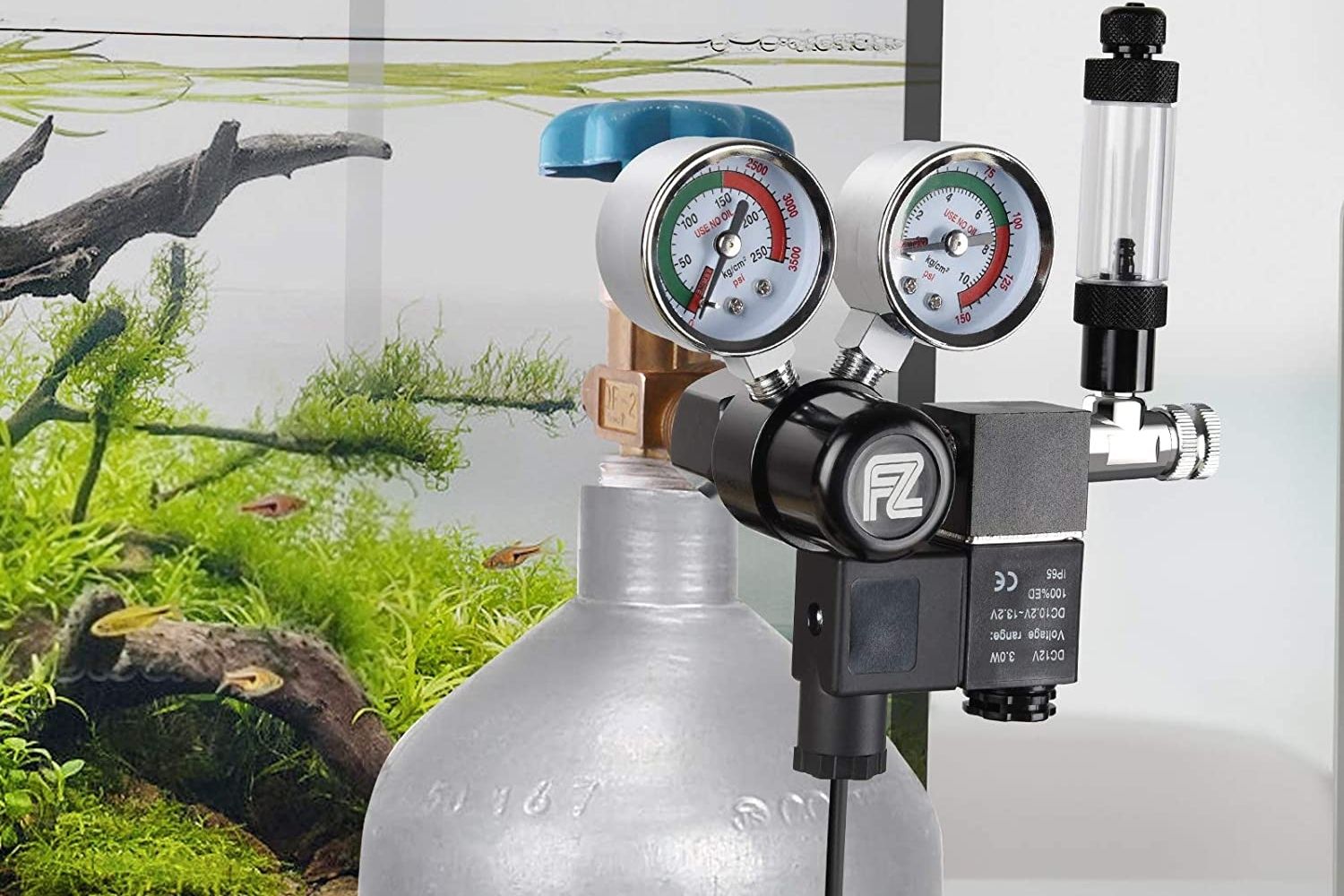
What to Consider When Buying Aquarium CO2 Regulator
A CO2 regulator obviously has things you need to review before making your purchase. Regardless of whether you’re purchasing a CO2 regulator for plants so they can flourish and stay safe in your tank or a CO2 regulator for an aquarium that will take your whole tank into account or one with your fish in mind, there are some universal patterns that all good regulators follow. Below you’ll find addressed all points of reference for making your choice.
Readability and Ease of Use
Installing your CO2 regulator is, for the most part, simple. Connecting a few tubes and adjusting a few knobs is usually all that is required. However, you don’t want to fiddle with the dials for hours to obtain the correct quantity of CO2. It’s nice to know that even the best CO2 regulators will need some skill, however, you don’t want to go overboard.
What Does it Come With?
- Needle Valve: also known as pressure relief valves, allow you to fine-tune the quantity of CO2 that enters your aquarium. You can control the number of bubbles per second using these valves, and they can also protect you from an overabundance of CO2.
- Bubble Counter: Bubble counters are highly recommended since they enhance accuracy, although they are not typically included with the regulator and may be purchased separately. They are an optional feature on some models that allows you to count the bubbles in the chamber to see how much CO2 is entering your tank.
- Gauges: One or two gauges are generally included on your aquarium CO2 regulator. If there is only one, it indicates the amount of CO2 left in the tank. If there are two, the second indicates the amount of pressure entering your tank.
- Tubing: There’s not much you need to worry about when it comes to tubing besides making sure that it carries CO2. Tubing isn’t going to be your primary concern because you can find it in most pet stores if the correct amount isn’t included in the package.
Materials
As with any other product out there, this one will also endure longer if the materials are of a higher grade. You don’t want to spend money on something that’s on the cusp of being broken all the time. The ideal materials to look for are stainless steel and brass, as well as the most popular. Always check for a product’s quality and durability so you won’t have to make another purchase to make up for it.

Functionality and Compatible
Your circumstances will determine this. If you’re planning to use your regulator on several tanks, you’ll need one that can handle the larger 5lb CO2 cylinders. Otherwise, you’ll have to replace your CO2 on a frequent basis.
On the other hand, if 5lb CO2 cylinders are hard to come by or you just need it for one tank (depending on the size), you might want to check for one that works with standard 24oz paintball cylinders since they are pretty simple to obtain. You also need to be 100% sure that fits in your CO2 reactor system.
Decompression Stages
It’s crucial how the carbon dioxide in the tank is depressurized before being inputted into the tank. On the market, there are essentially two types of regulators: single-stage and dual-stage.
A single-stage regulator removes pressurized CO2 from the tank, decompresses it, and pumps it back into the tank. A dual-stage regulator adds a step to the process, taking the decompressed CO2 from the first stage and allowing for finer adjustments.
Single-stage CO2 regulators are usually more expensive than double-stage CO2 regulators. The extra flow rate control is beneficial and might be tempting, but generally, single-stage ones have fewer faults to complain about.
Obtaining and maintaining a constant flow rate, on the other hand, might be challenging. It all depends on the size of your aquarium and your own preferences. Either way, for a bigger or particular tank, we recommend getting a double-stage system.
Our Verdict
To ensure you have a complete and smooth CO2 system for your planted tank we made sure to choose only the best CO2 regulators on the market.
After reviewing all the CO2 regulators, the one that topped our list is SR Aquaristik Dual Stage CO2 Regulator Kit. It is a dual-stage regulator and comes with a solenoid valve, making it perfect for planted aquariums. A close contender is AQUATEK CO2 Regulator. It gives you the same quality while staying on a budget. It is compatible with any CO2 diffuser, CO2 atomizer, and with most high-density tubing.
FAQs
Deciding on the best CO2 regulator while staying within your budget can be a bit of a challenge. Here are some frequently asked questions about high-pressure CO2 regulators to help guide you in your decisions.
Q: Are all CO2 regulators the same?
The short answer for this is no. Every regulator has its own differences starting from material to compatibility and even its functionality. We addressed these all above, however, the main thing to keep in mind is that the work they do is essentially the same. The way and quality in which it’s done differs from product to product.
Do I need CO2 for a planted aquarium?
You need CO2, especially for a planted aquarium. CO2 is vital to a plant’s normal functioning and the primary factor for photosynthesis. Plants must rely on what the marine animals in the tank generate as a source of food and energy without the addition of CO2.
Depending on the sort of plant you have, this isn’t enough for them to thrive. On the other hand, too much CO2 in your tank is hazardous for plants and other marine life. CO2 regulators are a must if you want a healthy planted tank with crystal clear water.
Q: How much CO2 is needed for a planted aquarium?
There’s not a set way to go about this one, but as a general guideline, one bubble should appear every 3 seconds for every 5 gallons, so you’d have to see four bubbles every 3 seconds for a 20-gallon tank and so on.
